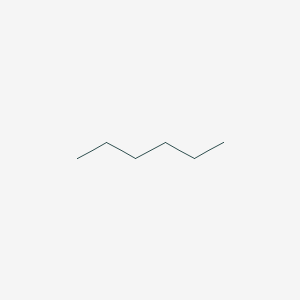Detail Information of Xenobiotics
| General Information of Xenobiotics (ID: XEO01016) | ||||||
|---|---|---|---|---|---|---|
| Xenobiotics Name |
N-hexane
|
|||||
| Xenobiotics Type |
Health or Environmental Toxicant(s)
|
|||||
| Classification |
Health Hazard/Toxicant
|
|||||
| Structure |
<iframe style="width: 300px; height: 300px;" frameborder="0" src="https://embed.molview.org/v1/?mode=balls&cid=8058"></iframe>
|
 |
||||
| 3D MOL | 2D MOL | |||||
| PubChem CID | ||||||
| DME(s) Modulated by This Xenobiotics | ||||||
| DME(s) Inhibited by This Xenobiotics | ||||||
| NADPH-dependent oxidoreductase (nfrA) | DME Info | Staphylococcus aureus | [1] | |||
| DME(s) Induced by This Xenobiotics | ||||||
| Aldo-keto reductase 1B1 (AKR1B1) | DME Info | Homo sapiens | [2] | |||
| Small intestine reductase (AKR1B10) | DME Info | Homo sapiens | [2] | |||
| Aldo-keto reductase 1C1 (AKR1C1) | DME Info | Homo sapiens | [2] | |||
| Aldo-keto reductase 1C3 (AKR1C3) | DME Info | Homo sapiens | [2] | |||
| Glutathione reductase (GSR) | DME Info | Homo sapiens | [2] | |||
| Quinone reductase 1 (NQO1) | DME Info | Homo sapiens | [3] | |||
| Prostaglandin reductase 1 (PTGR1) | DME Info | Homo sapiens | [2] | |||
| Thioredoxin reductase TR1 (TXNRD1) | DME Info | Homo sapiens | [2] | |||
If you find any error in data or bug in web service, please kindly report it to Dr. Yin and Dr. Li.

